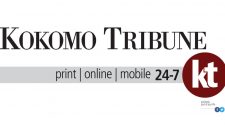BEIJING–(BUSINESS WIRE)–New Frontier Health Corporation (“NFH” or the “Company”) (NYSE: NFH), operator of the premium healthcare services provider United Family Healthcare (“UFH”), today announced its unaudited financial results for the second quarter ended June 30, 2020.
Financial and Operating Highlights1
All comparisons made on both a year-over-year (“yoy”) and quarter-on-quarter (“qoq”) basis. 2
Second Quarter 2020 Highlights:
- Revenue decreased by 12.6% yoy to RMB548.9 million from RMB628.1 million and increased by 27.4% from the prior quarter, as revenue continued to recover since the initial outbreak of the COVID-19 pandemic in February.
- Adjusted EBITDA (before IFRS 16 adoption)3 reverted to a profit of RMB54.0 million in the second quarter of 2020 compared to a loss of RMB(67.7) million in the prior quarter, representing a slight increase from RMB52.8 million in the prior year period. The change was primarily due to a recovery of revenue and implementation of cost controls.
- Net loss decreased to RMB79.3 million in second quarter of 2020 from RMB 168.6 million in the prior quarter, representing a slight increase from RMB75.2 million in the prior year period, resulting mainly from revenue decline, increased finance costs, and increased depreciation expenses (inclusion of the full the depreciation expenses of the newly expanded PXU facility in the second quarter of 2020).
- Tier 1 Operating Assets: revenue decreased by 19.8% yoy to RMB382.3 million from RMB476.5 million and increased by 26.6% qoq. Adjusted EBITDA (before IFRS 16 adoption) decreased by 27.4% yoy to RMB98.6 million from RMB135.8 million and increased by 331.0% qoq. The yoy declines in revenue and adjusted EBITDA were primarily due to a decline in patient volume as a result of the COVID-19 pandemic and the impact from the second wave of the outbreak in Beijing in June 2020. However, the strong revenue recovery from Q1 2020 was due to strong revenue recovery in Beijing and Shanghai prior to the second wave outbreak, easing of travel restrictions within China, and increased demand for non-emergency medical services.
- Tier 2 Operating and Other Assets: revenue decreased by 6.6% yoy to RMB77.6 million from RMB83.0 million, and Adjusted EBITDA (before IFRS 16 adoption) increased to RMB3.6 million from RMB(3.5) million, primarily due to a recovery of revenue and implementation of cost controls.
- Expansion Assets: revenue increased by 30.0% yoy to RMB89.1 million from RMB68.5 million due to the continued ramp-up of the new hospitals in Guangzhou and Pudong, Shanghai, despite the impact from the COVID-19 pandemic, and Adjusted EBITDA (before IFRS 16 adoption) increased by 52.3% yoy to RMB(19.5) million from RMB(40.8) million.
- Outpatient visits decreased by 23.3% yoy to 125,723 from 164,010 and increased by 40.5% qoq.
- Inpatient admissions decreased by 23.6% yoy to 2,059 from 2,695 and increased by 0.1% qoq.
- Bed utilization rate* decreased to 32.1% yoy from 37.5%.
- ASP: outpatient ASP increased by 10.8% yoy and inpatient ASP increased by 16.1% yoy due to an increase in the number of higher acuity services provided at the Company’s facilities.
* Bed utilization is calculated based on the weighted average maximum bed capacity for the period.
New Additions to Executive Management Team
The Board of Directors (the “Board”) of the Company appointed Mr. Carl Wu, a current member of the Board and Chairman of the Executive Committee of NFH, as President of NFH and appointed David Zeng, another current member of the Board, as Chief Operations Officer (“COO”) of NFH, effective August 1, 2020. Mr. Wu and Mr. Zeng together will form a new President and COO Office within NFH, which will replace the COO Office led by Jeffrey Staples, who has resigned from the Company for personal reasons. Mr. Wu will maintain his responsibility as Chairman of the Executive Committee. The President and COO Office will retain the same reporting lines as the previous COO Office.
Mr. Antony Leung, Chairman of NFH, commented, “Similar to many others in the industry, our business continued to be negatively affected by the COVID-19 pandemic during the quarter. However, the COVD-19 situation in China now seems to be under control. Although there is no assurance of the future path of the disease, we expect that any future outbreaks can be more easily controlled by effective public health measures. In the second quarter, we were glad to see a revenue recovery and operational ramp-up trend that led to quarter-over-quarter growth as well as improved profitability on the back of our previously announced efficiency initiatives. Our outpatient visits increased quarter-over-quarter, driving similar, sequential growth in revenues across all asset categories. We remain confident in our company and expect to continue to execute our operational and strategic plans.”
“We are also excited that Carl and David have formally joined the leadership team,” Mr. Leung continued. “They have been working closely with the executive team over the last several months and have been making significant progress in a number of strategic areas while improving the performance of the Company. I look forward to working closely with Roberta, Carl and David, and the management and medical teams to continue delivering world class healthcare to patients in China.”
Ms. Roberta Lipson, Chief Executive Officer of NFH and founder of UFH, added, “We are happy to see signs of recovery this quarter. Both outpatient visits and inpatient admissions across our network rebounded steadily in April and May, with an acceleration toward the end of May as the government eased COVID-19 related restrictions. Despite the second outbreak in Beijing in June, which was quickly contained, our outpatient volume achieved a 41% increase from the previous quarter. Meanwhile, we made progress on our strategic growth initiatives. For example, our hospital in Guangzhou, which first opened its doors in the fourth quarter of 2018, started to achieve monthly EBITDA breakeven in May 2020. Our Shanghai United Family Hospital launched its Center for Healthy Aging this quarter, providing health management services to patients aged 60 and older, reflecting the needs of Shanghai’s shifting demographic. In Beijing, both our Beijing United Family Hospital and our New Hope Oncology Center expanded their capabilities with investments in equipment upgrades. We also opened our Beijing United Family Tianchen Clinic in partnership with the Asia Infrastructure Investment Bank.”
“In addition to making progress in pursuit of our strategic growth, we are proud of our contributions to society’s needs during the outbreak. Many of our facilities have been approved to provide COVID-19 polymerase chain reaction (PCR) tests and antibody tests to patients on-site. In addition, our Beijing United Family Hospital was one of a select few private hospitals approved to carry out the supporting lab work, and we believe that both of these efforts will translate into business growth, as this testing brings more people through our doors to experience UFH’s environment and service for the first time. As our business continues its expected return to normal growth, we remain focused on network efficiency, expansion asset ramp-up, core market facilities, and service line development. Finally, I want to thank our team, which has made a significant effort to protect each other, our patients, and their families during this difficult time,” concluded Ms. Lipson.
Second Quarter 2020 Results
For management purposes, the Company is organized into business units based on the category and stage of development of the Company’s healthcare facilities and geographic locations. There are three reportable operating segments, as follows:
(a) Tier 1 Operating Assets: the existing general healthcare facilities located in tier 1 cities in China, such as Beijing United Family Hospital (“BJU”), Shanghai United Family Hospital (“PXU”), and their associated clinics.
(b) Tier 2 Operating and Other Assets: the existing general healthcare facilities located in tier 2 cities in China, such as Tianjin United Family Hospital (“TJU”), Qingdao United Family Hospital (“QDU”), and other assets, such as a Beijing United Family Rehabilitation Hospital (“Rehab”) and other clinic assets.
(c) Expansion Assets: the facilities recently opened or about to open including Shanghai Xincheng United Family Hospital (“PDU”), Guangzhou United Family Hospital (“GZU”), and Beijing Jingbei Women and Children’s United Family Hospital (“DTU”).
|
Revenue (RMB mm) |
2Q19 |
2Q20 |
Y-o-y Change % |
Q-o-q Change % |
|
|
|
Tier 1 Operating Assets (1) |
476.5 |
382.3 |
-19.8% |
26.6% |
|
|
|
Tier 2 Operating and Other Assets (3) |
83.0 |
77.6 |
-6.6% |
22.0% |
|
|
|
Operating Assets(4) |
559.5 |
459.8 |
-17.8% |
25.8% |
|
|
|
Expansion Assets(5) |
68.5 |
89.1 |
30.0% |
36.2% |
|
|
|
Total |
628.1 |
548.9 |
-12.6% |
27.4% |
|
|
- Tier 1 Operating Assets: revenue from UFH’s tier 1 facilities and their associated clinics decreased by 19.8% yoy due to a decline in patient volume as a result of the impact from the second wave of COVID-19 in Beijing in June 2020. However, revenue increased by 26.6% from the prior quarter due to strong revenue recovery in Beijing prior to the second wave outbreak, easing of travel restrictions within China, and increased demand for non-emergency medical services.
- Tier 2 Operating and Other Assets: revenue from UFH’s tier 2 facilities and other assets, as a group, decreased by 6.6% yoy due to a decline in patient volume as a result of COVID-19. However, revenue increased by 22.0% qoq due to the easing of travel restrictions within China and increased demand for non-emergency medical services.
- Total Operating Assets as a group decreased by 17.8% yoy and increased by 25.8% qoq due to patient volume recovery, easing of travel restrictions within China, and increased demand for non-emergency medical services. However, our facilities in Beijing were still affected by the second wave of COVID-19 in Beijing in June 2020.
- Expansion Assets: UFH’s GZU and PDU facilities were formally launched with complete practice licensesComplete practicing licenses means after receiving the formal approval of practicing license for medical institutions and obstetrics operating license in the fourth quarter of 2018. As a result of a strong ramp-up, driven by increased brand recognition and new patient uptick at GZU and PDU, revenue for UFH’s expansion assets, as a group, increased to RMB89.1 million in the second quarter of 2020 from RMB68.5 million in the second quarter of 2019. GZU recorded revenue growth of 17.3% yoy and PDU 26.2% yoy.
|
|
Adjusted EBITDA (before IFRS 16 adoption) (RMB mm) |
|
|||||||||||||
|
2Q19 |
2Q20 |
Y-o-Y Change % |
Q-o-q Change % |
|
|||||||||||
|
Adjusted EBITDA (before IFRS 16 adoption) |
|
||||||||||||||
|
Tier 1 Operating Assets(1) |
135.8 |
98.6 |
-27.4% |
331.0% |
|
||||||||||
|
Tier 2 Operating and Other Assets(2) |
-3.5 |
3.6 |
201.4% |
130.9% |
|
||||||||||
|
Operating Assets(3) |
132.3 |
102.2 |
-22.8% |
800.7% |
|
||||||||||
|
Expansion Assets(4) |
-40.8 |
-19.5 |
52.3% |
54.4% |
|
||||||||||
|
Unallocated Cost(5) |
-38.7 |
-28.7 |
25.8% |
21.0% |
|
||||||||||
|
Total Adjusted EBITDA (before IFRS 16 |
52.8 |
54.0 |
2.3% |
179.8% |
|
||||||||||
|
adoption)(6) |
|||||||||||||||
- Tier 1 Operating Assets: due to a decline in revenue as a result of COVID-19, BJU, PXU, and their associated clinics achieved Adjusted EBITDA (before IFRS 16 adoption) of RMB98.6 million in the second quarter of 2020, a decrease of 27.4% yoy. Adjusted EBITDA increased by 331.0% qoq due to strong revenue recovery and implementation of cost control measures.
- Tier 2 Operating and Other Assets:TJU, Rehab, and QDU achieved Adjusted EBITDA (before IFRS 16 adoption) of RMB3.6 million in the second quarter of 2020 compared to RMB(3.5) million in the second quarter of 2019, primarily due to implementation of cost control measures.
- Total Operating Assets: UFH’s operating assets, as a group, achieved Adjusted EBITDA (before IFRS 16 adoption) decrease of 22.8% yoy to RMB102.2 million in the second quarter of 2020, an increase of 800.7% qoq, primarily due to strong revenue recovery and implementation of cost control measures.
- Expansion Assets: expansion assets, as a group, experienced an increase in total Adjusted EBITDA (before IFRS 16 adoption) to RMB(19.5) million in the second quarter of 2020, an improvement from RMB(40.8) million in the second quarter of 2019, due to both strong revenue ramp-up and cost control measures. Adjusted EBITDA (before IFRS 16 adoption) for GZU reached breakeven in May.
- Unallocated Cost: Headquarter expenses decreased by 25.8% due to cost control measures implemented during the quarter. During this process, corporate headquarters reduced its administrative headcount by approximately 21.5%, or approximately 38 positions in total, through position elimination and attrition. In addition to headcount reductions, members of the Company’s senior management team took voluntary pay reductions ranging from 20% to more than 30% for the remainder of 2020. Further, SG&A expenses for corporate headquarters decreased by 33.9% yoy for 2020 as a result of headquarters cost reviews and reduced travel, communication, and other expenses.
- Total Adjusted EBITDA (before IFRS 16 adoption) for the second quarter of 2020 was RMB54.0 million compared to RMB52.8 million in the prior year period, primarily due to the recovery of revenue, strong ramp-up of expansion assets, and cost control measures adopted in the second quarter.
|
Key Operating |
2Q2019 |
|
2Q2020 |
|
Y-o-Y Change % |
|
Q-o-q Change % |
||||
|
Outpatient |
Inpatient |
|
Outpatient Volume |
Inpatient |
|
Outpatient Volume |
Inpatient |
|
Outpatient |
Inpatient |
|
|
Tier 1 Operating Assets |
123,801 |
1,789 |
|
89,415 |
1,204 |
|
-27.8% |
-32.7% |
|
40.4% |
-3.2% |
|
Tier 2 Operating and |
21,552 |
528 |
|
18,438 |
450 |
|
-14.4% |
-14.8% |
|
46.8% |
-0.2% |
|
Operating Assets(1) |
145,353 |
2,317 |
|
107,853 |
1,654 |
|
-25.8% |
-28.6% |
|
41.4% |
-2.4% |
|
Expansion Assets(2) |
18,657 |
378 |
|
17,870 |
405 |
|
-4.2% |
7.1% |
|
35.3% |
12.2% |
|
Total UFH |
164,010 |
2,695 |
|
125,723 |
2,059 |
|
-23.3% |
-23.6% |
|
40.5% |
0.1% |
- Operating Assets (Tier 1 and Tier 2): the yoy decline of both inpatient and outpatient volume was primarily due to the COVID-19 pandemic, as patients postponed or cancelled non-emergency medical services. In addition, the Chinese government implemented various preventive measures during the pandemic that affected the Company’s hospital and clinic operations. Such measures included: 1) the temporary closing of non-emergency departments, including dentistry and dermatology; 2) the temporary suspension of vaccine services; 3) daily limitations on volume for certain specialties to maintain social distancing practices; and 4) the closing of certain outpatient clinics in February. Inpatient volume was also affected as the Company was encouraged to delay non-emergency and elective procedures. With the easing of government policy as COVID-19 numbers decreased across China, most outpatient volumes began to recover gradually in May and June, although recovery in Beijing hospitals and clinics were further affected as Beijing experienced a second wave surge in cases in June 2020. The qoq decline in inpatient admission was due to lower admissions in the pediatrics department throughout UFH facilities, as schools stayed closed and enhanced personal hygiene and protective measures for school children were implemented. However, Company experienced strong growth in other departments including internal medicine, surgery, orthopedics, which recorded over 32.4% qoq growth in terms of inpatient admissions in Q2 2020.
- Expansion Assets: PDU and GZU saw continued ramp ups in inpatient volume, driven by OBGYN, postpartum care, internal medicine, orthopedics, surgeries, and other services. Outpatient volume declined yoy due to the COVID-19 pandemic outbreak in Guangzhou in April; however, there were strong recovery trends during the quarter as various restrictive measures were relaxed. Outpatient volume for PDU achieved 21.3% yoy growth during the period and GZU started to see an increase in outpatient volume yoy in June.
FINANCIAL RESULTS
Unaudited Second Quarter 2020 Results
Revenue was RMB548.9 million ($77.7 million) in the second quarter, representing a decrease of 12.6% yoy from RMB628.1 million in the second quarter of 2019. The decrease primarily resulted from a decline in patient volume as patients postponed or cancelled non-emergency medical services due to the impact of COVID-19. However, revenue increased by 27.4% from the prior quarter due to strong recovery in patient volume and demand for premium healthcare service.
- Tier 1 Operating Assets: revenue decreased by 19.8% yoy to RMB382.3 million from RMB476.5 million and increased by 26.6% qoq. The decline in revenue and adjusted EBITDA was primarily due to a decline in patient volume as a result of the COVID-19 pandemic and the impact from the second wave outbreak in Beijing in June 2020.
- Tier 2 Operating and Other Assets: revenue decreased by 6.6% yoy to RMB77.6 million from RMB83.0 million, and Adjusted EBITDA (before IFRS 16 adoption) increased to RMB3.6 million from RMB(3.5) million, primarily due to a recovery of revenue and implementation of cost controls.
- Expansion Assets: revenue increased by 30.0% yoy to RMB89.1 million from RMB68.5 million due to the continued ramp-up of the new hospitals in Guangzhou and Pudong, Shanghai, despite the impact from the COVID-19 pandemic. Adjusted EBITDA (before IFRS 16 adoption) increased by 52.3% yoy to RMB(19.5) million from RMB(40.8) million.
Operating expenses were RMB565.1 million ($80.0 million) in the second quarter, representing a decrease of 10.8% yoy from RMB633.7 million and a slight increase of 1.1% qoq.
- Salaries, wages and benefits expenses decreased by 20.0% yoy to RMB289.0 million from RMB361.3 million and decreased by 5.0% qoq, primarily due to the implementation of cost-saving initiatives, which included a 38 headcount reduction and voluntary pay reductions at headquarters, utilization of employee leave and limiting new hires, and reductions in contributions to social insurance and benefits expenses as a result of government policies during the pandemic. The Company incurred a severance cost of RMB11 million in the second quarter due to headcount reduction.
- Supplies and purchased medical services expenses increased by 2.8% yoy to RMB103.4 million from RMB100.7 million and 37.0% qoq, mainly due to the enhancement of vaccination and postpartum services to drive recovery of patient volumes in the second quarter.
- Depreciation and amortization expenses increased by 24.6% yoy to RMB106.2 million from RMB85.2 million and decreased by 1.8% qoq. The yoy increase was primarily due to fair value appreciation of plant and equipment, contracts with insurers related to the business combination, and full depreciation of the newly expanded PXU facility.
- Lease and rental expense (benefit) was a benefit of RMB0.8 million in the second quarter, primarily due to a reduction in rental expenses as a result of government policies during the pandemic.
- Bad debt benefit increased by 26.2% yoy to RMB1.8 million from RMB1.4 million compared to a bad debt expense of RMB4.0 million in the prior quarter, primarily due to better collection rates over the past year.
- Other operating expenses decreased by 18.3% yoy to RMB69.1 million from RMB84.5 million, mainly due to cost-saving initiatives and the decrease in transaction costs and fees payable to certain Chinese partners of the Company. Other operating expenses increased by 6.1%, or RMB4.0 million, from the prior quarter, mainly representing an increase in fees payable to certain Chinese partners as a result of increased profitability due to the revenue recovery from the prior quarter.
As a result of the above, loss from operations in the second quarter of 2020 was RMB16.2 million ($2.3 million) compared to loss from operations of RMB5.6 million ($0.8 million) in the prior year period. Loss before income taxes in the second quarter of 2020 was RMB72.4 million ($10.2 million), compared to loss before income taxes of RMB52.6 million ($7.4 million) in the prior year period. Net loss in the second quarter of 2020 was RMB79.3 million ($11.2 million) compared to net loss of RMB75.2 million ($10.6 million) in the prior year period. The increase in losses yoy mainly resulted from an expanded cost basis, reflecting full operations of the new PXU facility, the revenue decline caused by the pandemic, and increased finance costs due to the Company’s Senior Secured Term Loan, and which were partially offset by cost-saving initiatives and cost reductions as a benefit of government policies in response to the COVID-19 pandemic.
As of June 30, 2020, the Company had RMB845.8 million ($119.7 million) in cash and cash equivalents. Cash generated from operating activities for the second quarter were RMB386.6 million ($54.7 million), cash used for investing activities were RMB112.6 million ($15.9 million), and cash used for financing activities were RMB476.8 million ($67.5 million) for repayment of IFC loans and increased interest from Senior Secured Term Loan.
|
RECONCILIATON OF NON-IFRS FINANCIAL MEASURES |
||||
|
(RMB mm) |
|
|
||
|
For the three months ended |
||||
|
2019 |
|
2020 |
||
|
|
|
|
||
|
Net loss |
(75) |
|
(79) |
|
|
Less: Finance income |
(1) |
|
(1) |
|
|
Add: Finance costs |
34 |
|
66 |
|
|
Add: Foreign exchange loss/(gain) |
14 |
|
– |
|
|
Less: Gain on disposal of an associate |
– |
|
(3) |
|
|
Less: Other income, net |
(1) |
|
(6) |
|
|
Add: Income tax expense |
23 |
|
7 |
|
|
Operating loss |
(6) |
|
(16) |
|
|
Add: Share-based compensation |
19 |
|
1 |
|
|
Add: Depreciation and amortization |
85 |
|
106 |
|
|
Add: Discontinued monitoring fee payable to Fosun Pharma and TPG |
1 |
|
– |
|
|
Add: Transaction related costs |
4 |
|
1 |
|
|
Add: Severance costs |
– |
|
11 |
|
|
Adjusted EBITDA |
103 |
|
103 |
|
|
Less: Lease expense adjustments as a result of IFRS 16 adoption |
(50) |
|
(49) |
|
|
Adjusted EBITDA (before IFRS 16 adoption) |
53 |
|
54 |
|
|
|
|
For the three months ended June 30, 2020 |
||||||
|
|
|
Operating assets Tier 1 |
|
Operating |
|
Expansion |
|
Total |
|
|
|
|
|
|
|
|
|
|
|
Segment results |
|
120 |
|
8 |
|
– |
|
128 |
|
Less: Segment lease expense adjustment as a result of |
|
(22) |
|
(5) |
|
(19) |
|
(46) |
|
Add: Severance costs |
|
1 |
|
1 |
|
– |
|
2 |
|
Adjusted EBITDA (before IFRS 16 Adoption) |
|
99 |
|
4 |
|
(19) |
|
84 |
|
Add: Unallocated costs – severance related |
|
|
|
|
|
|
|
9 |
|
Less: Unallocated costs – others |
|
|
|
|
|
|
|
(39) |
|
Total Adjusted EBITDA (before IFRS 16 Adoption) |
|
|
|
|
|
|
|
54 |
|
Add: Lease expense adjustment as a result of adoption |
|
|
|
|
|
|
|
49 |
|
Adjusted EBITDA |
|
|
|
|
|
|
|
103 |
|
Less: Share-based compensation |
|
|
|
|
|
|
|
(1) |
|
Less: Depreciation and amortization |
|
|
|
|
|
|
|
(106) |
|
Less: Transaction related costs |
|
|
|
|
|
|
|
(1) |
|
Less: Severance costs |
|
|
|
|
|
|
|
(11) |
|
Operating loss |
|
|
|
|
|
|
|
(16) |
|
Add: Finance income |
|
|
|
|
|
|
|
1 |
|
Less: Finance costs |
|
|
|
|
|
|
|
(66) |
|
Add: Other income, net |
|
|
|
|
|
|
|
6 |
|
Add: Gain on disposal of an associate |
|
|
|
|
|
|
|
3 |
|
Less: Income tax expense |
|
|
|
|
|
|
|
(7) |
|
Net loss |
|
|
|
|
|
|
|
(79) |
|
|
|
|
|
|
|
|
|
|
RECENT DEVELOPMENTS
COVID-19 Recovery Trend & Operational Focus
Recovery prior to second outbreak in Beijing in June
The Company’s outpatient visits and inpatient admissions continued to be lower during the quarter compared to the prior year period. The Company’s facilities have been significantly affected by the government’s COVID-19 related restrictions, including: 1) closing borders to foreigners, which led to fewer expatriate patients in the Company’s facilities; 2) temporary suspension of multi-site practice for physicians; and 3) restrictions on types of services offered at medical facilities. Despite these restrictions, the Company’s facilities saw strong volume recovery month over month as China’s COVID-19 cases generally continued to decrease and restrictive regulations were relaxed or removed completely.
In April, May, and June, the Company saw a steady rebound in both outpatient visits and inpatient admissions across the UFH network. Then, beginning at the end of May when the government lowered its COVID-19 response level and reduced or removed many of the remaining restrictions, volumes rebounded at an even faster rate. This change was primarily driven by demand in family medicine, pediatrics, and emergency care as patients returned to UFH for their regular healthcare needs.
Second outbreak in Beijing in mid-June
On June 11, a new outbreak of COVID-19 cases was identified in Beijing’s FengTai district. In response to the new cases, the Beijing government raised its COVID-19 response level and mandated that many of the prior precautions be re-implemented across Beijing, including restrictions on doctors practicing at multiple sites, stricter protocols for providing care for fever patients, and limitations on the number of non-COVID patients that can be seen each day to maintain social distancing practices. As a result of these measures, the Company’s facilities in Beijing saw an immediate drop in patient volumes. From the start of this second outbreak until the end of June, outpatient visit volumes at BJU and associated clinics fell by approximately 25%, and inpatient admissions fell by approximately 7% from the level seen in the earlier part of June. The Company’s facilities in other cities were not negatively affected by the second outbreak in Beijing and continued to steadily recover during this time. Despite the impact of the June outbreak, group wide revenue in June continued to recover to 97% of prior year revenue. Beijing has since returned to its more open status as the outbreak was quickly contained by mid-July.
Although overall patient volumes for the second quarter were lower than in the same period of 2019, the Company saw a strong rebound compared to the first quarter of 2020. During the second quarter of 2020, outpatient volumes were 40.5% higher than the prior quarter. Every reporting asset category saw an improvement in outpatient volumes on a quarter-over-quarter basis. Outpatient volume growth has been particularly strong in dental, family medicine, pediatrics, and emergency medicine. Inpatient admissions did not increase quarter over quarter, primarily due to 1) second wave of COVID-19 outbreak in Beijing, 2) lower admissions in the pediatrics department, as schools stayed closed and enhanced personal hygiene and protective measures for school children were implemented. However, the Company experienced strong growth in other departments including internal medicine, surgery, orthopedics, which recorded over 20% qoq growth in terms of inpatient admissions in Q2 2020.
Lowered Response Level in Beijing after July 20
With the second outbreak brought under control, the Beijing government lowered its COVID-19 response level from Level 2 back to Level 3 on July 20, 2020. With this change, most of the restrictions were removed or significantly reduced. The Company’s Beijing facilities immediately saw an increase in volumes. Since then, UFH has seen continued growth, with weekly revenue consistently higher than it was during the same period a year ago.
Revenue and Volume Recovery from both Chinese and Expatriate Patients
With the closing of international borders and other travel restrictions within China since the start of the pandemic, the Company has seen a higher volume and revenue contribution from Chinese patients. During the recovery process, there has been strong growth in the Chinese patient population at all UFH facilities. Since the beginning of the second quarter, Chinese patient numbers not only returned to prior levels but also have achieved year-over-year increase, demonstrating the resilience and strong demand for premium private healthcare service from Chinese patients. Despite monthly improvements in foreign patient volumes during the same period, there is still a sizeable gap compared to pre-COVID-19 periods during second quarter. However, during July, the Company has seen the first year-over-year increase in terms of revenue from expatriate patients. With domestic travel restrictions already eased and international borders opening on a controlled basis, the Company expects foreign patient volumes to experience year over year growth in the near future.
Expansion of COVID-19 Testing Capabilities
As one of the most widely recognized premium private healthcare providers in China, many of the Company’s facilities have been approved to provide COVID-19 PCR tests and COVID-19 antibody tests to patients on site and for group testing for corporate and school partners at their work sites or campuses. During the second quarter, BJU was one of only a few private hospitals approved to carry out the supporting laboratory work. This ability to do the work in-house gives BJU the opportunity to provide patients high-quality testing with a higher turnaround time than waiting for over-burdened government and commercial labs to conduct the lab work.
The Company has provided more than 24,000 PCR tests and antibody tests as of the date of this release. The Company has been working with some of China’s top multi-national corporations, state-owned enterprises, schools, and embassies to tailor clinical arrangements to meet their testing needs. Under these arrangements, UFH provides COVID-19 testing to its partners’ employees and, in some cases, to their customers, which could potentially generate additional revenue and attract new patients to the Company’s network.
GZU Positive EBITDA starting in May
After only 21 months of operations, GZU reported positive EBITDA for the first time in May. June and July EBITDA continued to be positive as well. Even during the COVID-19 period, GZU has seen months of continuous strong volume and revenue growth, driven by OBGYN, postpartum care, dermatology, internal medicine, orthopedics, and surgeries, as well as other services.
BJM Opens Clinic in Asia Infrastructure Investment Bank China Headquarters
In April, the Company’s newest clinic, Beijing United Family Tianchen Clinic, opened on the west side of Beijing inside the China headquarters building of the Asia Infrastructure Investment Bank (“AIIB”). This new clinic, operated in partnership with AIIB, provides the bank’s employees with access to quality healthcare. Through the clinic, UFH will provide AIIB employees with basic family medicine services and access to a variety of specialty services at other UFH clinics and hospitals through tele-medicine as well as referrals to other sites for care as needed. Under the partnership agreement with AIIB, UFH will have minimal capital investment requirements and no rental cost while receiving a monthly health management fee from AIIB. This exciting new model is expected to give UFH the ability to directly support its long-term partner’s health needs, and the Company expects to replicate this model with other corporate partners.
NFH Agrees to be the Sole Medical Provider for the Beijing Universal Resort
At the end of June, NFH signed an agreement to be the sole medical provider for employees and guests at the upcoming Universal Beijing Resort. The 4.4 km2 destination park located to the southeast of Beijing is expected to feature a theme park, hotels, and iMax theater complex, as well as extensive dining and shopping attractions. NFH will begin to staff the on-site medical center starting in the fourth quarter of 2020. Under this agreement, the Company will provide frontline medical services, ambulance coordination, and health patrols on the property.
BJM Expands Its Capabilities with Investment in Equipment Upgrades
During the quarter, both Beijing United Family Hospital and New Hope Oncology Center invested in upgrading their technical capabilities. Of note, the New Hope Oncology Center in Beijing upgraded its Varian Linear Accelerator to include the latest Varian Eclipse Treatment Planning software, bringing the latest developments in radiation therapy to the center. This upgrade is expected to provide several key benefits, including: (i) the ability to create better clinical treatment plans for patients and move more quickly from assessment and diagnosis to starting treatment; (ii) a reduction in patients’ treatment time and the potential to produce better clinical outcomes; and (iii) the ability to connect with other specialty centers to collaborate more efficiently.
Related Party Transactions
On April 1, 2020, one affiliate of the Company entered into a definitive agreement for the sale of 80% equity interest in Beijing Youhujia Healthcare Management Co. Ltd. (“YHJ”) to one affiliate of New Frontier Group. This disposition was completed on April 28, 2020. YHJ will continue to support UFH’s postpartum rehabilitation business in the provision of postpartum nursing services while UFH will continue to provide YHJ with nursing training to help enhance service quality. YHJ was not profitable in either fiscal year 2019 or the first quarter of 2020.
BUSINESS OUTLOOK
Despite the challenges brought on by COVID-19, the Company expects to record 2-5% revenue growth in the third quarter of 2020 as compared to the third quarter of 2019, as patient volumes are expected to steadily recover.
ANNUAL REPORT ON FORM 20-F
The Company’s Annual Report for the year ended December 31, 2019 (the “Annual Report”) was filed with the U.S> Securities and Exchange Commission (the “SEC”) on March 31, 2020. A copy of the report can be found under the Financials section of the Company’s investor relations website at www.nfh.com.cn or on the SEC’s website at www.sec.gov. Shareholders may request a hard copy of the Company’s audited financial statements for the year ended December 31, 2019, which were included in the Annual Report, free of charge by filling out the “Information Request Form” in the Resources section of the Company’s investor relations website.
CONFERENCE CALL
A conference call and webcast to discuss New Frontier Healthcare’s financial results and guidance will be held at 8:00 a.m. U.S. Eastern Time on Thursday, August 27, 2020 (or Thursday, August 27, 2020, at 8:00 pm Beijing Time). Interested parties may listen to the conference call by dialing numbers below:
United States: 1-877-407-0789
International: 1-201-689-8562
China Domestic: 86 400 120 2840
Hong Kong: 800 965 561
Conference ID: 13708749
Participants are encouraged to dial into the call at least 15 minutes in advance due to high call volume
The replay will be accessible through September 3, 2020, by dialing the following numbers:
United States: 1-844-512-2921
International: 1-412-317-6671
Replay PIN: 13708749
The webcast will be available on the Company’s investor relations website at www.nfh.com.cn and will be archived on the site shortly after the call has concluded. A presentation to accompany the call will also be available for download on the website.
About New Frontier Health Corporation
New Frontier Health Corporation (NYSE: NFH) is the operator of United Family Healthcare (UFH), a leading private healthcare provider offering comprehensive premium healthcare services in China through a network of private hospitals and affiliated ambulatory clinics. UFH currently has nine hospitals in operation or under construction in all four tier 1 cities and selected tier 2 cities. Additional information may be found at www.nfh.com.cn.
Forward-Looking Statements
Certain statements made in this release are “forward looking statements” within the meaning of the “safe harbor” provisions of the United States Private Securities Litigation Reform Act of 1995. When used in this press release, the words “estimates,” “projected,” “expects,” “anticipates,” “forecasts,” “plans,” “intends,” “believes,” “seeks,” “may,” “will,” “should,” “future,” “propose” and variations of these words or similar expressions (or the negative versions of such words or expressions) are intended to identify forward-looking statements. These forward-looking statements include, without limitation, NFH’s ability to address the effects of the COVID-19 pandemic; NFH’s ability to manage patient inflows; and NFH’s ability to prevent the spread of COVID-19 within its facilities; NFH’s ability to grow its business manage its growth; the benefits and synergies of the business combination it completed in December 2019, including anticipated cost savings, results of operations, financial condition, liquidity, prospects, growth, strategies and the markets in which the Company operates. Such forward-looking statements are based on available current market material and management’s expectations, beliefs and forecasts concerning future events impacting NFH. These forward-looking statements are not guarantees of future results and involve a number of known and unknown risks, uncertainties, assumptions and other important factors, many of which are outside NFH’s control that could cause actual results or outcomes to differ materially from those discussed in the forward-looking statements. For a discussion of such risks, please refer to NFH’s Annual Report on Form 20-F, filed with the SEC on March 31, 2020 and NFH’s subsequent filings with the SEC. NFH undertakes no obligation to update or revise any forward-looking statements, whether as a result of new information, future events or otherwise, except as required by law.
Non-IFRS Measures
The discussion and analysis includes certain measures, including Adjusted EBITDA (before IFRS 16 adoption), which have not been prepared in accordance with IFRS. This measure does not have any standardized meaning prescribed by IFRS and are therefore unlikely to be comparable to similar measures presented by other companies. This measure should be considered as supplemental in nature and not as a substitute for the related financial information prepared in accordance with IFRS. We use this measure to evaluate our operating results and for financial and operational decision-making purposes. We believe that Adjusted EBITDA is helpful in comparing our performance over various reporting periods on a consistent basis by removing from operating results the impact of items that do not reflect core operating performance, and in identifying underlying operating results and trends.
Adjusted EBITDA (before IFRS 16 adoption), is calculated as net loss plus (i) depreciation and amortization, (ii) finance costs/(income), (iii) other gains or losses, (iv) other expenses (such as share based compensation), (v) provision for income taxes, as further adjusted for (vi) certain monitoring fees paid to certain shareholders prior to the Business Combination, (vii) lease expense adjustments as a result of adoption of IFRS 16, (viii) transaction related costs (such as insurance amortization), and (ix) severance costs as a result of the restructuring process mainly in corporate headquarters since the second quarter of 2020. UFH adopted IFRS 16 on January 1, 2019, and recognized lease liabilities and corresponding “right-of-use” assets for all applicable leases, and recognized interest expense accrued on the outstanding balance of the lease liabilities and depreciation of right-of-use assets. As a result, the adoption of IFRS 16 caused depreciation and amortization and finance costs to increase in 2019, and excluded all applicable lease expenses in Adjusted EBITDA. For ease of comparison to prior periods, the Company eliminated the impact of IFRS 16 on Adjusted EBITDA.
Please see the table captioned “Reconciliations of non-IFRS Financial Measures.”
Exchange Rate Information
The translations from Renminbi to U.S. dollars included in the financial statements and elsewhere in this press release have been included for purposes of convenience were made at a rate of RMB7.0651 to US$1.00, the exchange rate set forth in the H.10 statistical release of the Federal Reserve Board on June 30, 2020.
|
NEW FRONTIER HEALTH CORPORATION UNAUDITED CONSOLIDATED STATEMENTS OF COMPREHENSIVE INCOME (LOSS) (All amounts in thousands) |
|||||||||||||
|
Predecessor |
|
Successor |
|
Predecessor |
|
Successor |
|||||||
|
|
|
For the
three months June 30, 2019 |
|
For the three months ended June 30, 2020 |
|
For the
six months June 30, 2019 |
|
For the six months ended June 30, 2020 |
|||||
|
RMB |
|
RMB |
US$ |
|
RMB |
|
RMB |
US$ |
|||||
|
|
|
|
|
|
|
||||||||
|
Revenues |
628,089 |
|
548,948 |
|
77,699 |
|
1,205,533 |
|
979,891 |
|
138,695 |
||
|
Operating expenses |
|
|
|
|
|
|
|
|
|
|
|
||
|
Salaries, wages and benefits |
(361,312) |
|
(289,011) |
|
(40,907) |
|
(687,896) |
|
(593,203) |
|
(83,962) |
||
|
Supplies and purchased medical services |
(100,656) |
|
(103,441) |
|
(14,641) |
|
(193,624) |
|
(178,934) |
|
(25,326) |
||
|
Depreciation and amortization expense |
(85,218) |
|
(106,158) |
|
(15,026) |
|
(168,853) |
|
(214,244) |
|
(30,324) |
||
|
Lease and rental (expense)/benefit |
(3,359) |
|
778 |
|
110 |
|
(6,742) |
|
(1,483) |
|
(210) |
||
|
Bad debt benefit (expense) |
1,410 |
|
1,780 |
|
252 |
|
(3,216) |
|
(2,249) |
|
(318) |
||
|
Other operating expenses |
(84,529) |
|
(69,090) |
|
(9,779) |
|
(156,121) |
|
(134,223) |
|
(18,998) |
||
|
Expense total |
(633,664) |
|
(565,142) |
|
(79,991) |
|
(1,216,452) |
|
(1,124,336) |
|
(159,138) |
||
|
Operating loss |
(5,575) |
|
(16,194) |
|
(2,292) |
|
(10,919) |
|
(144,445) |
|
(20,443) |
||
|
Finance income |
663 |
|
605 |
|
86 |
|
1,191 |
|
1,023 |
|
145 |
||
|
Finance costs |
(34,802) |
|
(65,697) |
|
(9,299) |
|
(69,420) |
|
(138,064) |
|
(19,542) |
||
|
Foreign exchange (losses)/gains |
(13,656) |
|
179 |
|
25 |
|
(1,826) |
|
17,532 |
|
2,481 |
||
|
Gain on disposal of an associate |
– |
|
2,762 |
|
391 |
|
– |
|
2,762 |
|
391 |
||
|
Other income, net |
752 |
|
5,945 |
|
841 |
|
796 |
|
13,011 |
|
1,842 |
||
|
Loss before income taxes |
(52,618) |
|
(72,400) |
|
(10,248) |
|
(80,178) |
|
(248,181) |
|
(35,126) |
||
|
Income tax (expense)/benefits |
(22,545) |
|
(6,943) |
|
(983) |
|
(40,690) |
|
266 |
|
38 |
||
|
Loss for the period |
(75,163) |
|
(79,343) |
|
(11,231) |
|
(120,868) |
|
(247,915) |
|
(35,088) |
||
|
Attributable to |
|
|
|
|
|
|
|
||||||
|
Equity holders of the parent |
(67,907) |
|
(73,808) |
|
(10,448) |
|
(105,869) |
|
(233,978) |
|
(33,115) |
||
|
Non-controlling interests |
(7,256) |
|
(5,535) |
|
(783) |
|
(14,999) |
|
(13,937) |
|
(1,973) |
||
|
|
|
|
|
|
|
|
|
|
|
|
|
|
|
|
Loss per share attributed to ordinary equity holders of the parent |
|
|
|
|
|
|
|
|
|
|
|||
|
Basic |
|
|
|
(0.56) |
|
(0.08) |
|
|
|
(1.78) |
|
(0.25) |
|
|
Diluted |
|
|
|
(0.56) |
|
(0.08) |
|
|
|
(1.78) |
|
(0.25) |
|
|
|
|
|
|
|
|
|
|
|
|
|
|
|
|
|
Other comprehensive loss |
|
|
|
|
|
|
|||||||
|
Items to be reclassified to profit or loss in subsequent periods (net of tax): |
|||||||||||||
|
Currency translation differences |
9,614 |
|
372 |
|
53 |
|
440 |
|
(9,623) |
|
(1,362) |
||
|
Other comprehensive loss |
9,614 |
|
372 |
|
53 |
|
440 |
|
(9,623) |
|
(1,362) |
||
|
|
|
|
|
|
|
|
|
|
|
|
|||
|
Comprehensive loss for the period |
(65,549) |
|
(78,971) |
|
(11,178) |
|
(120,428) |
|
(257,538) |
|
(36,450) |
||
|
|
|
|
|
|
|
|
|
|
|
|
|||
|
Comprehensive loss attributable to |
|
|
|
|
|
|
|
|
|
|
|
||
|
Equity holders of the parent |
(58,293) |
|
(73,436) |
|
(10,395) |
|
(105,429) |
|
(243,601) |
|
(34,477) |
||
|
Non-controlling interests |
(7,256) |
|
(5,535) |
|
(783) |
|
(14,999) |
|
(13,937) |
|
(1,973) |
||
|
|
|
|
|
|
|
|
|
|
|
|
|
|
|
|
NEW FRONTIER HEALTH CORPORATION UNAUDITED CONSOLIDATED STATEMENTS OF FINANCIAL POSITION (All amounts in thousands) |
|||||||
|
December 31, 2019 (Audited) |
June 30, 2020 |
||||||
|
RMB |
RMB |
US$ |
|||||
|
Non-current assets |
|||||||
|
Plant and equipment |
1,962,781 |
|
1,875,413 |
|
265,447 |
||
|
Goodwill |
6,056,253 |
|
6,052,861 |
|
856,727 |
||
|
Intangible assets |
2,584,893 |
|
2,555,037 |
|
361,642 |
||
|
Right-of-use assets |
1,773,007 |
|
1,680,860 |
|
237,910 |
||
|
Deferred tax assets |
59,001 |
|
50,144 |
|
7,097 |
||
|
Restricted cash |
350 |
|
350 |
|
50 |
||
|
|
Investment in an associate |
– |
|
1,000 |
|
142 |
|
|
Other non-current assets |
106,121 |
|
101,651 |
|
14,388 |
||
|
Total non-current assets |
12,542,406 |
|
12,317,316 |
|
1,743,403 |
||
|
Current assets |
|
|
|
|
|
||
|
Inventories |
56,592 |
|
65,487 |
|
9,269 |
||
|
Trade receivable |
215,376 |
|
184,332 |
|
26,091 |
||
|
Due from related parties |
66,923 |
|
8,896 |
|
1,259 |
||
|
Prepayments and other current assets |
38,323 |
|
44,311 |
|
6,272 |
||
|
Restricted cash |
376,715 |
|
– |
|
– |
||
|
Cash and cash equivalents |
1,353,300 |
|
845,779 |
|
119,712 |
||
|
Total current assets |
2,107,229 |
|
1,148,805 |
|
162,603 |
||
|
TOTAL ASSETS |
14,649,635 |
|
13,466,121 |
|
1,906,006 |
||
|
Current liabilities |
|
|
|
|
|
||
|
Trade payables |
99,082 |
|
110,777 |
|
15,679 |
||
|
Contract liabilities |
270,196 |
|
301,429 |
|
42,665 |
||
|
Accrued expenses and other current liabilities |
882,158 |
|
391,543 |
|
55,419 |
||
|
Due to related parties |
4,045 |
|
4,530 |
|
641 |
||
|
Tax payable |
15,278 |
|
3,180 |
|
450 |
||
|
Long-term borrowings |
400,325 |
|
6,256 |
|
885 |
||
|
Lease liabilities |
90,521 |
|
83,372 |
|
11,801 |
||
|
Total current liabilities |
1,761,605 |
|
901,087 |
|
127,540 |
||
|
NET CURRENT ASSETS |
345,624 |
|
247,718 |
|
35,063 |
||
|
TOTAL ASSETS LESS CURRENT LIABILITIES |
12,888,030 |
|
12,565,034 |
|
1,778,466 |
||
|
Non-current liabilities |
|
|
|
|
|
||
|
Long-term borrowings |
2,060,933 |
|
2,062,994 |
|
291,998 |
||
|
Contract liabilities |
67,873 |
|
68,307 |
|
9,668 |
||
|
Deferred tax liabilities |
681,715 |
|
673,425 |
|
95,317 |
||
|
Lease liabilities |
1,661,182 |
|
1,597,757 |
|
226,148 |
||
|
Other long-term liabilities |
9,358 |
|
9,274 |
|
1,313 |
||
|
Total non-current liabilities |
4,481,061 |
|
4,411,757 |
|
624,444 |
||
|
Net assets |
8,406,969 |
|
8,153,277 |
|
1,154,022 |
||
|
EQUITY |
|
|
|
|
|
||
|
Equity attributable to the equity holders of the Company |
|
|
|
|
|
||
|
Ordinary shares |
91 |
|
91 |
|
13 |
||
|
Capital surplus |
8,430,405 |
|
8,434,251 |
|
1,193,791 |
||
|
Translation reserves |
6,302 |
|
(3,321) |
|
(470) |
||
|
Accumulated deficit |
(265,618) |
|
(499,596) |
|
(70,713) |
||
|
8,171,180 |
|
7,931,425 |
|
1,122,621 |
|||
|
Non-controlling interests |
235,789 |
|
221,852 |
|
31,401 |
||
|
Total equity |
8,406,969 |
|
8,153,277 |
|
1,154,022 |
||
|
NEW FRONTIER HEALTH CORPORATION UNAUDITED CONDENSED CONSOLIDATED STATEMENTS OF CASH FLOWS (All amounts in thousands) |
|||||||||||||||
|
Predecessor |
Successor |
Predecessor |
Successor |
||||||||||||
|
For the |
For the |
For the |
For the |
||||||||||||
|
Cash generated from (used for): |
RMB |
RMB |
US$ |
RMB |
RMB |
US$ |
|||||||||
|
Operating activities |
74,168 |
386,555 |
54,713 |
178,085 |
149,539 |
21,166 |
|||||||||
|
Investing activities |
(29,161) |
(112,606) |
(15,938) |
(179,916) |
(127,236) |
(18,009) |
|||||||||
|
Financing activities |
(44,614) |
(476,769) |
(67,482) |
(102,609) |
(529,864) |
(74,997) |
|||||||||
|
Net increase/(decrease) in cash and cash |
393 |
(202,820) |
(28,707) |
(104,440) |
(507,561) |
(71,840) |
|||||||||
1 As a result of the adoption of International Financial Reporting Standard 16 (“IFRS 16”), effective January 1, 2019, related lease expenses have been reflected in depreciation and amortization expenses and finance costs. Segment revenue and Adjusted EBITDA (before IFRS 16 adoption) are presented for the purposes of comparison with prior years. The financial statements have been translated into United States dollars for convenience purposes at a rate of RMB7.0651 to US$1.00, the exchange rate on June 30, 2020, set forth in the H.10 statistical release of the Federal Reserve Board.
2 The Company acquired UFH in a business combination that closed on December 18, 2019. The financial results for the quarter ended June 30, 2019 presented herein are those of the Company’s wholly owned subsidiary, Healthy Harmony Holdings, L.P. (the “Predecessor”), while the financial results for the quarter ended June 30, 2020, presented herein are those of the combined Company (the “Successor”).
3 Adjusted EBITDA (before IFRS 16 adoption) is a non-IFRS performance measure. See “Non-IFRS Financial Measures” for a reconciliation of Adjusted EBITDA to its most comparable financial measure calculated in accordance with IFRS.
4Complete practicing licenses means after receiving the formal approval of practicing license for medical institutions and obstetrics operating license.
Source: New Frontier Health Corporation














